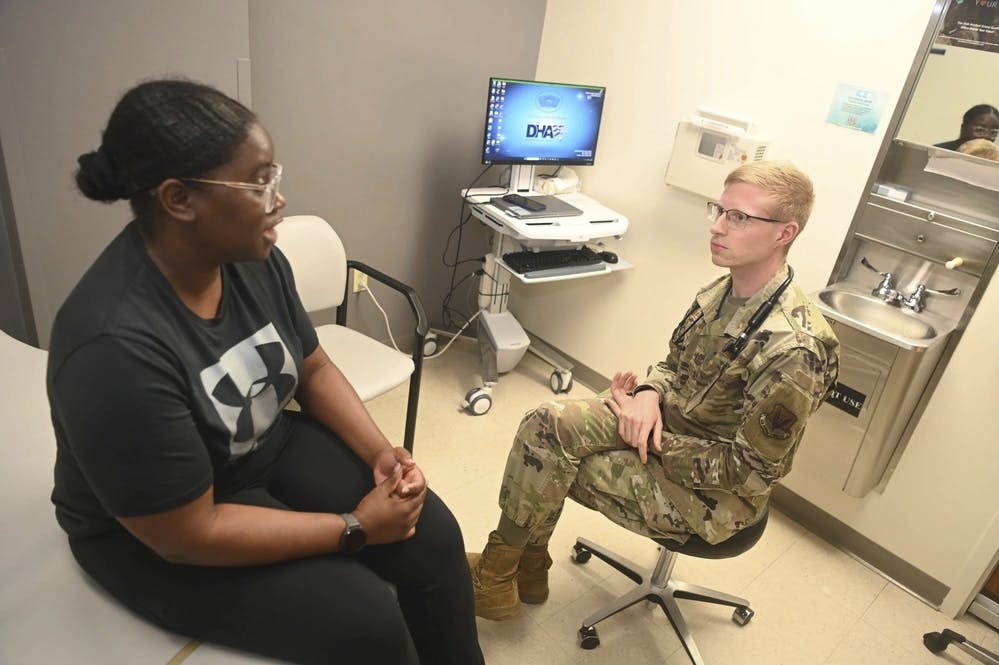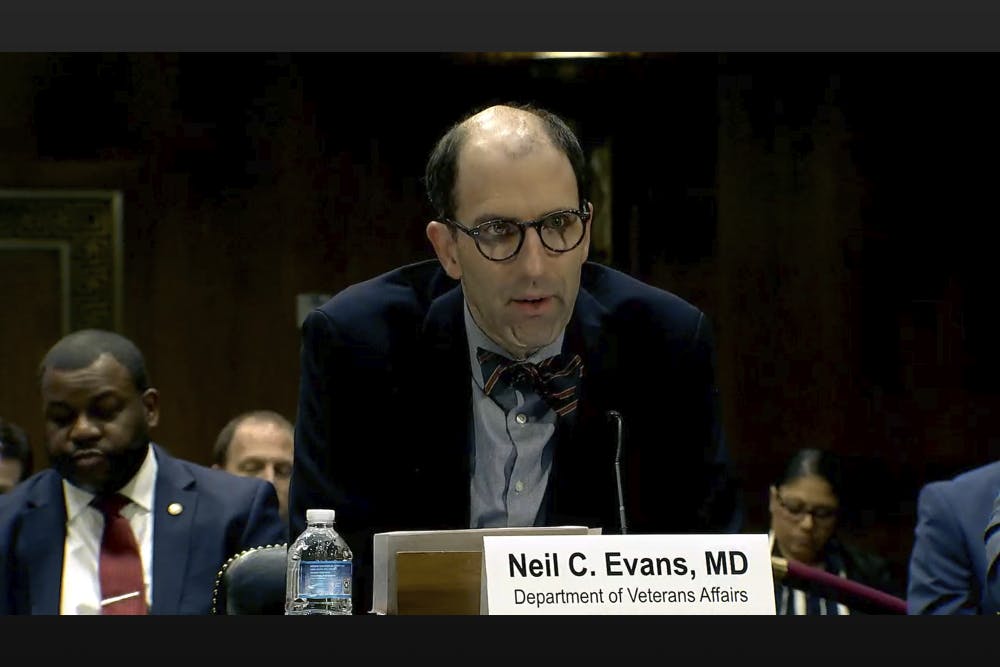APIs Are Supporting Community Care Interoperability at VA
The agency is seeing success with initiatives like its Veterans Interoperability Pledge and USCDI standards in supporting veteran health care.

The Department of Veterans Affairs is seeing returns on its interoperability efforts to enhance data sharing between its facilities and community health providers, agency leaders said at the HIMSS conference in Las Vegas Wednesday.
Initiatives like the Veteran Interoperability Pledge and the Veteran Confirmation API are enabling VA to better identify veterans, expand access to benefits, and improve health outcomes through more integrated electronic health records.
“Around a third or so of our care is now through that [community care] network. As Mike Bost says, chairman of the House Committee on Veterans’ Affairs, ‘community care is VA care.’ It’s powerful concept. It really gets to the heart of interoperability,” Jonathan Nebeker, executive director of Clinical Informatics and Digital Health Office chief medical informatics officer (CMIO) within the Veterans Heath Administration (VHA), explained during a panel at the conference.
The VA Community Care program allows veterans to receive care from community providers outside the agency. Nebeker said that interoperability between outside providers and VA is critical to meet the calls from Chairman Bost.
Veteran Interoperability Pledge
The agency has historically faced challenges in identifying patients’ veteran status to determine whether they qualify for VA benefits.
The Veteran Interoperability Pledge is helping overcome this.
“We are in our first year of live with 13 health systems that came together and joined what’s called the Veteran Interoperability Pledge. There are so many opportunities for us to really tackle a lot of the challenges and obstacles of caring for a shared patient in the community, but the very first thing that we really had to tackle was the simplest which is, how do you know that the person in front of you is a veteran?”
Veterans are receiving additional benefits from the COMPACT Act, which provides free, temporary health care to eligible veterans experiencing a suicidal crisis, and the PACT Act, which expands benefits for toxic-exposed veterans.
“If a physician knows that they’re also a veteran, it will help enable a discussion around if these [health conditions are] possibly due to your military experience. And if so, refer them back to the VA,” said Meg Marshall, director of informatics regulatory affairs at VHA, during the panel.
Additionally, providers can leverage the Veteran Confirmation API to determine whether a given person is “confirmed” or “not confirmed” as a title 38 veteran.
“In the first year of our pilot, we had eight health systems, and six of those health systems are actually of the original 13 who signed the pledge with us, but we’ve had two additional health systems who’ve heard about the work and wanted to implement the API,” Marshall added.
The confirmation API has received 10 million queries and confirmed 200,000 veterans so far. VA is running at a 1 to 2% confirmation rate.
“Stanford Health has shared, and I think this was only in their first three months, 12,000 veterans that they confirmed. 46% of those veterans that they confirmed had one of the 38 presumptive diagnoses for military toxic exposures,” Marshall said.
New Interoperability Standards
The United States Core Data for Interoperability (USCDI) is a set of standardized health data elements and classes used to electronically exchange health information.
The Assistant Secretary for Technology Policy/Office of the National Coordinator for Health IT plans to release the final USCDI version six in July with additional veteran status categories.
“We are proposing that veteran status be part of the USCDI core data set that is required for electronic health record certification,” Marshall said. “In the short term — we’re only on USCDI v3 — there is an observation status, there is military occupation history that can be leveraged, but by adding this as a demographic element, it’s really going to be able to pull a group out of their population, be able to stratify them as a veteran and run analytics against it.”
This is a carousel with manually rotating slides. Use Next and Previous buttons to navigate or jump to a slide with the slide dots
-

VA CIO Targets Modern IT and Smarter Workforce Alignment
Agency leaders told lawmakers they are focused on trimming legacy systems and restructuring its workforce to streamline operations.
3m read -

Trump Executive Order Boosts HBCUs Role in Building Federal Tech Workforce
The executive order empowers HBCUs to develop tech talent pipelines and expand access to federal workforce opportunities.
3m read -

IHS Prepares to Deploy PATH EHR at Pilot Sites in 2026
IHS targets PATH EHR pilot in 2026, emphasizing governance, collaboration and interoperability as key pillars of the modernization strategy.
4m read -

FEHRM CTO Targets Two-Year Cloud Migration for Federal EHR
Lance Scott touts new EHR tech advancements, including cloud migration, expanded data exchange and AI integration to improve care delivery.
4m read -

VHA’s AI Chief Led NIH’s New AI RFI
The agency's AI chief Gil Alterovitz helped develop a plan that hints at how NIH is charting the future of AI and biomedical research.
5m read -

VA Plans Future EHR Deployment on Facility Relationships
VA’s EHR program is expected to restart in 2026 and will plan deployment based on pre-existing relationships between facilities to drive interoperability.
21m watch -

Trump Taps Maj. Gen. John Bartrum to Lead VHA
Nominated for VA's top health role, Bartrum brings over four decades of military and public service to the agency.
3m read -

AI Growing in Focus Amid HHS Restructure
Department of Health and Human Services officials see promise in artificial intelligence amid efficiency goals.
4m read -

Federal EHR Leaders Eye Ambient Dictation, Interoperability
Officials from DOD and VA said they are exploring new EHR features such as functionality in offline status and interoperability.
5m read -

Federal Agencies Tout Tech in President Trump’s First 100 Days
Defense modernization and health care restructuring landed among some of the key IT highlights within the president's first few months.
6m read -

VA Plans to Rollout Its EHR in 'Waves,' Program Chief Says
VA takes a new approach to its electronic health record deployment, following a proposed $2 billion White House funding boost.
4m read -

VA Secretary Tells Congress Tech Efficiencies Will Help Offset Workforce Reductions
Technology improvements will help allow department to maintain veteran care, VA leadership tells Senate Veterans Affairs Committee.
















